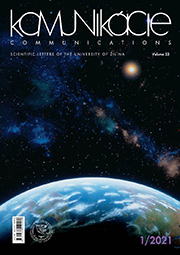Optimal Route Determination to provide Relief Following an Earthquake using the Traffic Density Ratio (Case Study: Isfahan's Fire Stations)
Optimal Route Determination to provide Relief Following an Earthquake using the Traffic Density Ratio (Case Study: Isfahan's Fire Stations)
Author(s): Seyed Ahmad Almasi, Mohammad Mehdi Khabiri, Mehdi Fallah Tafti, Meisam AkbarzadehSubject(s): Business Economy / Management, Transport / Logistics
Published by: Žilinská univerzita v Žilině
Keywords: earthquake; crisis management; emergency evacuatio; optimal route selection; fire stations;
Summary/Abstract: Despite the very important role of primary arteries and transportation network in providing relief for regions affected by an earthquake and black spots, they have received less attention. Therefore, in the current study, at first, the status quo of the traffic black spots and safe regions was identified to predict the movement direction, evacuation of residents from their habitat and temporary residence using the region zoning. The trips were assigned to the network based on the trip distribution matrix and their relevant travel times both related to the crisis state. The results indicated that out of 94 traffic regions, located in the area under investigation, 7 regions were put in the very low risk or safe regions group and 10 traffic regions were put in a very high-risk group. Additionally, the results indicated that out of 794 links, located in the area under investigation, about 32 links will have a very undesirable status following an earthquake.
Journal: Komunikácie - vedecké listy Žilinskej univerzity v Žiline
- Issue Year: 23/2021
- Issue No: 1
- Page Range: 20-32
- Page Count: 13
- Language: English

